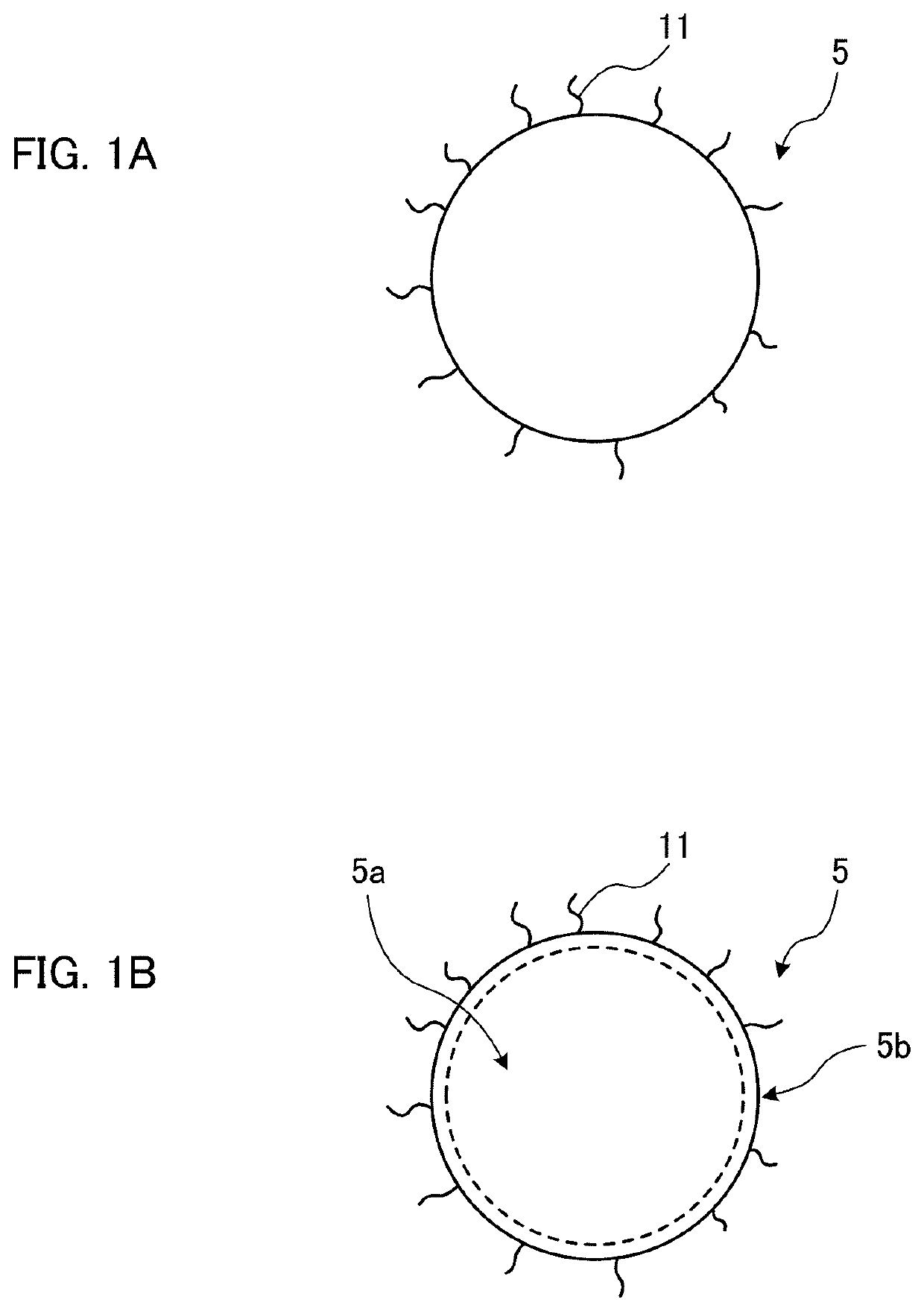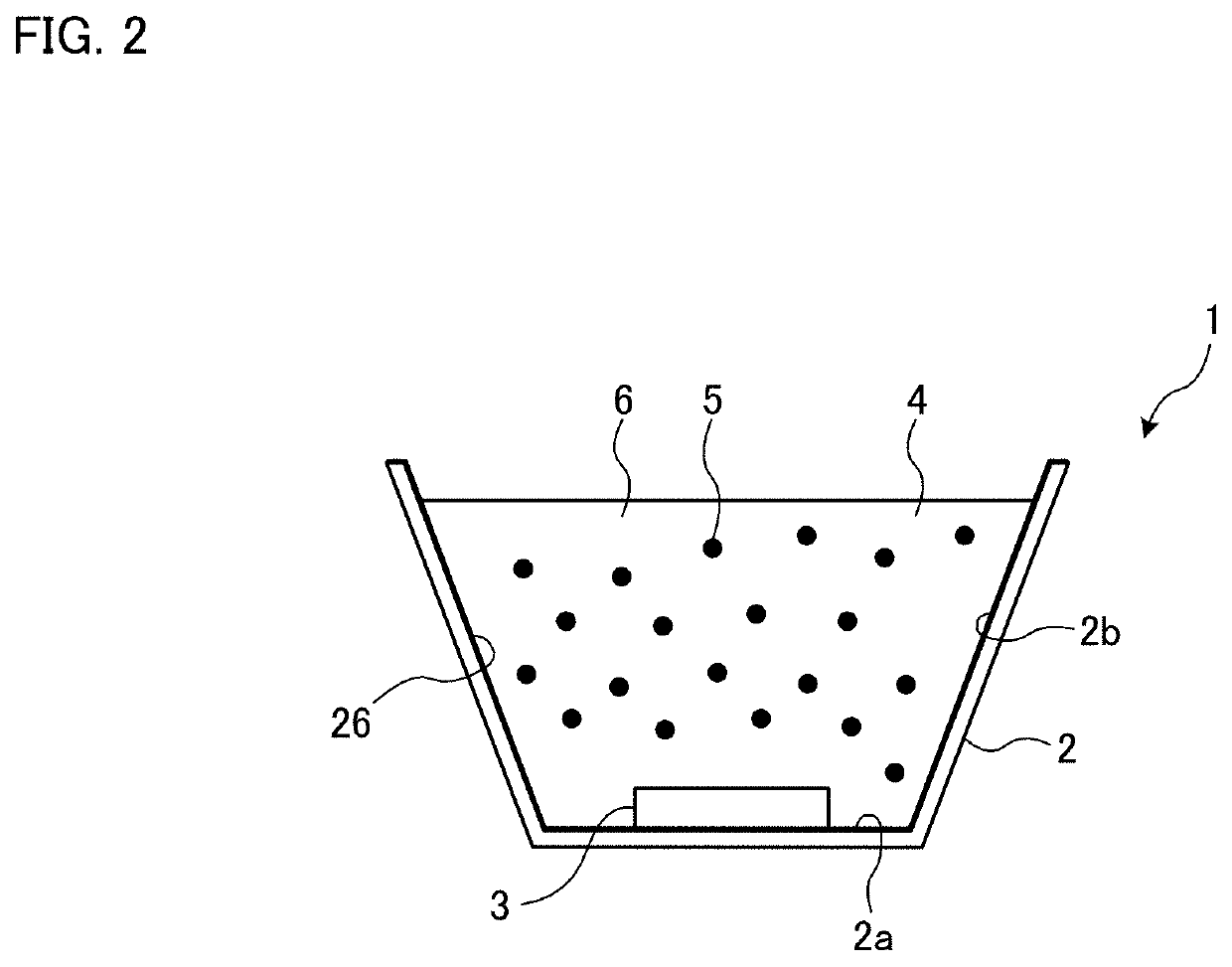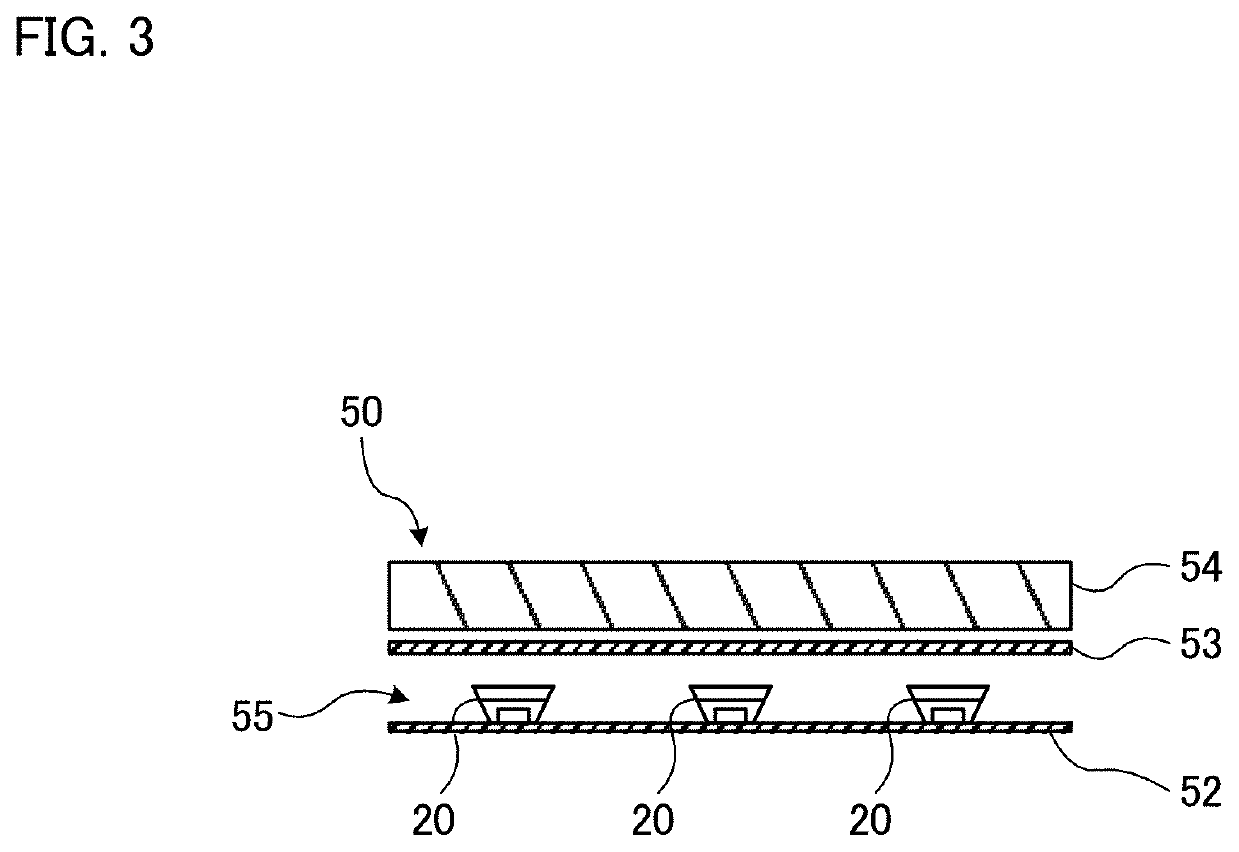Quantum dot and wavelength converting member, lighting member, back light unit, and display device using quantum dot, and method of producing quantum dot
- Summary
- Abstract
- Description
- Claims
- Application Information
AI Technical Summary
Benefits of technology
Problems solved by technology
Method used
Image
Examples
example 1
[0116]Into a 100 mL reaction vessel, 36.3 mg of anhydrous copper acetate: Cu(OAc)2, 0.5 mL of dodecanethiol: DDT, 0.1 mL of oleylamine: OLAm, and 4 mL of octadecene: ODE were charged. After that, heating was performed while stirring in an inert gas (N2) atmosphere, thereby dissolving the raw materials.
[0117]To this solution, 0.2 mL of a trioctylphosphine telluride: Te-TOP solution (0.5M) was added, and heating was performed while stirring at 220° C. for 10 minutes. The resultant reaction solution (Cu2Te) was cooled to room temperature.
[0118]After that, 273 mg of zinc chloride: ZnCl2, 3 mL of trioctylphosphine: TOP, and 0.1 mL of oleylamine: OLAm were added to the reaction solution, and heating was performed while stirring in an inert gas (N2) atmosphere at 220° C. for 30 minutes.
[0119]The resultant reaction solution was subjected to a measurement using the spectrofluorometer. Thus, as shown in FIG. 4, a fluorescence wavelength of approximately 518.5 nm and a fluorescence FWHM of app...
example 2
[0121]Into a 100 mL reaction vessel, 36.3 mg of anhydrous copper acetate: Cu(OAc)2, 63.8 μL of hexadecanethiol: HDT, 0.1 mL of oleylamine: OLAm, and 10 mL of octadecene: ODE were charged. After that, heating was performed while stirring in an inert gas (N2) atmosphere, thereby dissolving the materials.
[0122]To this solution, 0.2 mL of a trioctylphosphine telluride: Te-TOP solution (0.5M) was added, and heating was performed while stirring at 200° C. for 10 minutes.
[0123]The resultant reaction solution was cooled to room temperature. After that, 273 mg of zinc chloride: ZnCl2, 3 mL of trioctylphosphine: TOP, and 0.1 mL of oleylamine: OLAm were added to the reaction solution. Heating was then performed while stirring in an inert gas (N2) atmosphere at 250° C. for 15 minutes.
[0124]As a result of a measurement on the resultant reaction solution using the spectrofluorometer, as shown in FIG. 5, a fluorescence wavelength of approximately 510.0 nm and a fluorescence FWHM of approximately 2...
example 3
[0126]Into a 100 mL reaction vessel, 36.3 mg of anhydrous copper acetate: Cu(OAc)2 and 5 mL of dodecanethiol: DDT were charged. After that, heating was performed while stirring in an inert gas (N2) atmosphere, thereby dissolving the materials.
[0127]To this solution, 0.2 mL of a trioctylphosphine telluride: Te-TOP solution (0.5M) was added, and heating was performed while stirring at 220° C. for 20 minutes. The resultant reaction solution was cooled to room temperature. After that, 273 mg of zinc chloride: ZnCl2, 3 mL of trioctylphosphine: TOP, and 0.2 mL of oleylamine: OLAm were added to the reaction solution. Heating was then performed while stirring at 220° C. for 30 minutes in an inert gas (N2) atmosphere.
[0128]As a result of a measurement on the resultant reaction solution using the spectrofluorometer, as shown in FIG. 6, a fluorescence wavelength of approximately 529.5 nm and a fluorescence FWHM of approximately 26.1 nm were obtained as optical properties.
[0129]Ethanol was adde...
PUM
 Login to View More
Login to View More Abstract
Description
Claims
Application Information
 Login to View More
Login to View More - Generate Ideas
- Intellectual Property
- Life Sciences
- Materials
- Tech Scout
- Unparalleled Data Quality
- Higher Quality Content
- 60% Fewer Hallucinations
Browse by: Latest US Patents, China's latest patents, Technical Efficacy Thesaurus, Application Domain, Technology Topic, Popular Technical Reports.
© 2025 PatSnap. All rights reserved.Legal|Privacy policy|Modern Slavery Act Transparency Statement|Sitemap|About US| Contact US: help@patsnap.com



